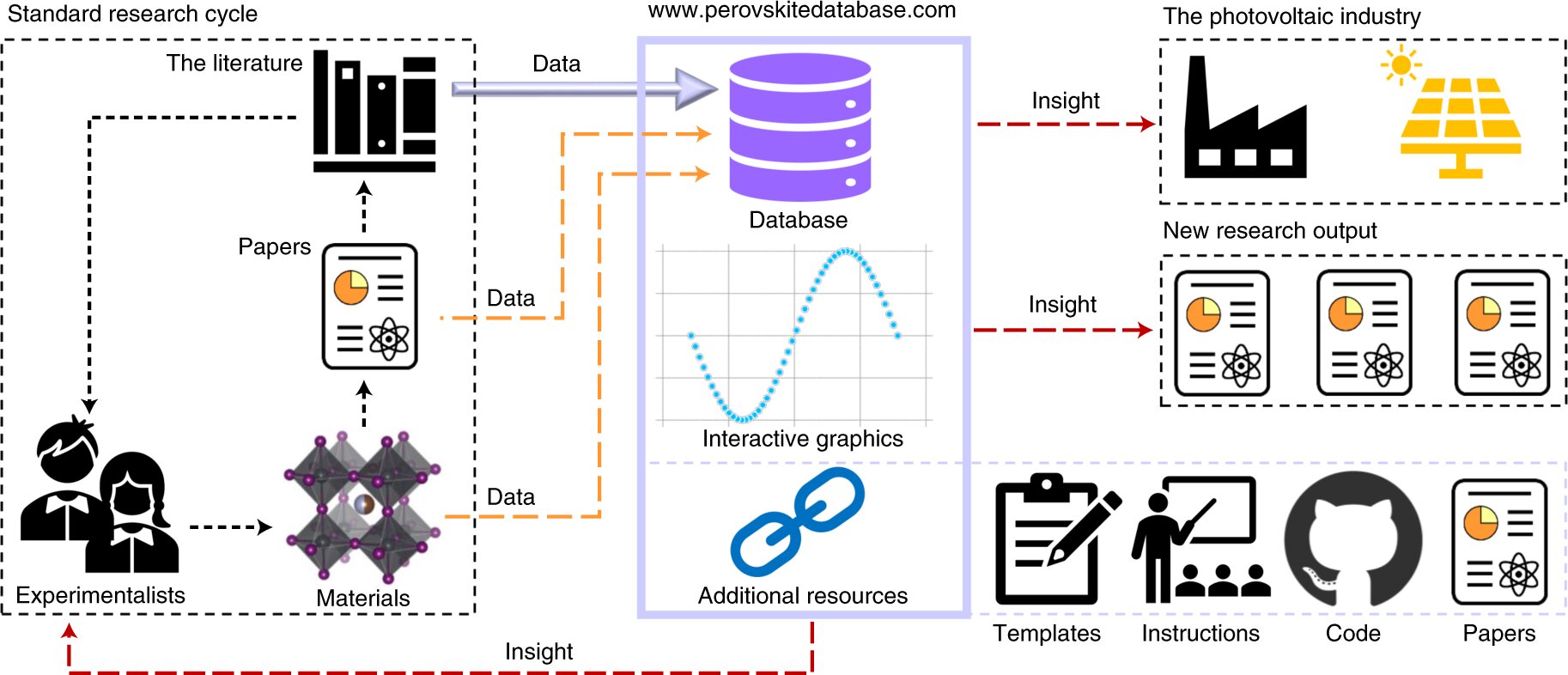The Wikipedia of perovskite solar cell research
An international team of experts has collected data on metal halide perovskite solar cells from more than 15,000 publications and developed a database with visualization options and analysis tools. The database is open source and provides an overview of the rapidly growing knowledge as well as the open questions in this exciting class of materials. The study was initiated by HZB scientist Dr. Eva Unger and implemented and coordinated by her postdoc Jesper Jacobsson.
Halide perovskites have huge potential for solar cells and other optoelectronic applications. Solar cells based on metal-organic perovskites achieve efficiencies of more than 25 percent, they can be produced cheaply and with minimal energy consumption, but still require improvements in terms of stability and reliability. In recent years, research on this class of materials has boomed, producing a flood of results that is almost impossible to keep track of by traditional means. Under the keyword “perovskite solar,” more than 19,000 publications had already been entered in the Web of Science (spring 2021).
Now, 95 experts from more than 30 international research institutions have designed a database to systematically record findings on perovskite semiconductors. The data are prepared according to the FAIR principles, i.e. they are findable, accessible, interoperable and reusable. By reading the existing literature, the experts have collected more than 42,000 individual data sets, in which the data can be filtered and displayed according to various criteria such as material compositions or component type. Researchers from several teams at HZB were involved in this Herculean task.
“Data has always been the basis of empirical science, but when data is collected in sufficiently large quantities and in a coherent way, it can be searched with modern algorithms and artificial intelligence and can provide completely new insights,” says Jesper Jacobsson, coordinator of this project.
The database provides analysis tools and graphical data visualizations that enable easy and interactive exploration, and also offers the option to easily upload new data from new peer-reviewed publications. “It’s a Wikipedia for perovskite solar cell research,” says Eva Unger, counting on the participation of the research community: “In the future, this type of research data platform will offer us the opportunity to make our research data public according to FAIR principles in addition to established publication formats.”
Not only science, but also industry will benefit: The database provides an overview of the current state of knowledge, while also uncovering gaps in knowledge from which new productive research questions can arise.
Novel method to fabricate lead halide perovskite solar cells with record efficiency
T. Jesper Jacobsson et al, An open-access database and analysis tool for perovskite solar cells based on the FAIR data principles, Nature Energy (2021). DOI: 10.1038/s41560-021-00941-3
Citation:
The Wikipedia of perovskite solar cell research (2021, December 20)
retrieved 20 December 2021
from https://techxplore.com/news/2021-12-wikipedia-perovskite-solar-cell.html
This document is subject to copyright. Apart from any fair dealing for the purpose of private study or research, no
part may be reproduced without the written permission. The content is provided for information purposes only.
For all the latest Technology News Click Here
For the latest news and updates, follow us on Google News.

